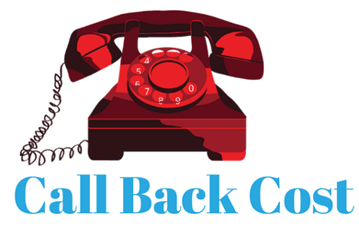
The title – callback cost vs website marketing – may sound promotional since Lucep is an instant response callback tool for website marketing. But this is an interesting debate that you should be aware of. The rise of digital marketing in general, and website marketing in particular, can be attributed to two compelling reasons. One is that marketers as a species follow their customers, and your customer base can now be entirely targeted online and on mobile. The second reason is that digital marketing is very cost effective compared to offline marketing.
The Flaw in Digital Marketing
Reaching your customers online through your website, social media, email marketing, search engines, etc. is easy, fast and affordable. But there’s a fatal flaw in this plan – the conversion rates are abysmally low. Your typical website gets 2-3% conversions from its visitors, and it may go up to 10% if you are in a niche industry such as financial services. Regardless, it’s still far lower than the conversion rate of over 50% for inbound phone sales.
So the problem is to move your visitors back from web to phone, and that’s where a callback tool or strategy comes into the picture. Google’s Pay Per Call ad model (both calls only and call extensions) converts far better than the usual pay per click ads. Lucep can furthermore attest to the fact that using our callback tool increases lead generation for our users by more than 48%, and lead conversions ultimately go up by more than 72%.
That’s great, but now you’re moving your website leads offline. Does it mean you’re losing the cost effectiveness benefit of online marketing for the rest of the sales cycle? Or has your inside sales operation just kicked into gear and made your field sales team irrelevant? This is the reason I want to delve deeper into this discussion about adding callback and website marketing costs to get a snapshot of the total marketing ROI, and then comparing it against the ROI of traditional outbound marketing and offline marketing.
Calculating CAC With Lowered Callback Costs
The average customer acquisition cost (CAC) of inbound marketing is half that of outbound marketing (source – Econsultancy). The lead information you get with a callback notification makes it a warm inbound lead.
In order to calculate CAC, you have to add the total cost of lead acquisition (CPL x no. of leads) and the total sales touch costs (sales team salaries, travel allowances, etc.) for a selected period, and divide the sum by the number of lead conversions.
CAC = [Lead Acquisition Costs + Sales Costs] / Number of lead conversions
You’re still online at the lead acquisition stage, so your CPL is highly affordable. Next you use Callback to connect these leads online to the phones of your inside sales team instead of having a team of expensive field reps to follow up on leads. But what is the cost of this call back technology that you’re making use of?
If you bring in a developer to add this feature to your website, you have to pay upfront, and there will be disruption to your website marketing while the changes are incorporated into the site. But if you make use of a SaaS click to call service, there are no upfront costs, and the implementation is seamless and fast. You can sign up for a free trial, and have the Lucep instant response widget installed and running on your site in less than 5 minutes.
Do this, and your CAC suddenly drops sharply, as compared to a traditional sales process. A recent study on B2B sales benchmarks found out that only 13% of leads actually convert to opportunities, and the average time for conversion may be somewhere between 80-84 days. Only 6% of opportunities actually convert to deals within a small time frame of about 18 days. In total, the sales cycle takes close to 100 days from start to end
Callback also reduces your costs by shortening the sales cycle, and allowing your inside sales team to focus on qualified inbound leads that they are able to contact at exactly the moment when the lead has reached out to talk to you.
How Much Does a Sales Rep Cost You?
Now let’s look at it from the other side. Building a rockstar sales team is always going to help your company outperform the competition. But it’s an expensive proposition. Good sales reps don’t come cheap. You may hire raw talent, and hope to train them into top performers. But sales training has it’s own costs.
A survey from CSO insights notes that 47% of companies say it takes 10 or more months for new salespeople to become fully productive (67% say 7 or more months). Another study by Sales Group Readiness tells you that the average tenure of a salesperson from the time they start a job to the time they leave is less than 2 years. Go figure.
Now sales organizations can and do face all these challenges – by making heavy investments on hiring a sales team, providing them the right sales enablement tools, motivating them through innovative wage structures and gamification, monitoring performance, team building exercises, ongoing training sessions, etc.
But after all this hassle, you can then cut your costs in half just by implementing simple click to call back technology on your website and connecting the leads generated online to your inside sales team. Your website visitors get an instant response 24/7, your sales team is suddenly firing on all cylinders without racking up huge expense accounts, your sales pipeline is filled with sales-qualified leads (SQLs), and the lead conversion rate shoots by more than 50%.